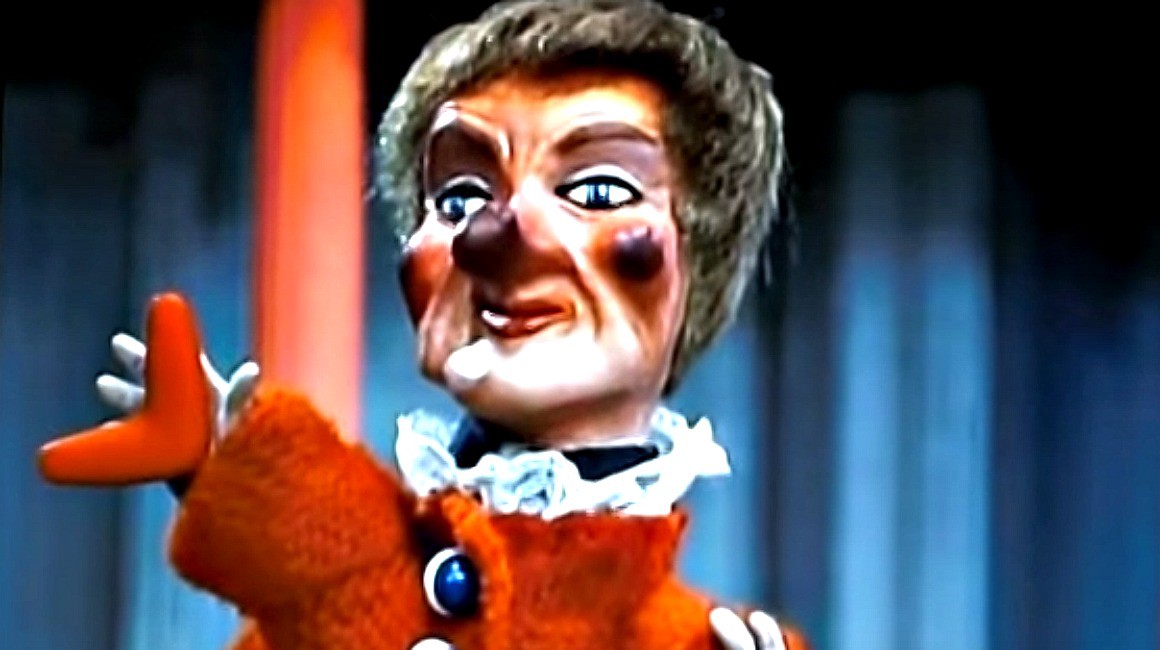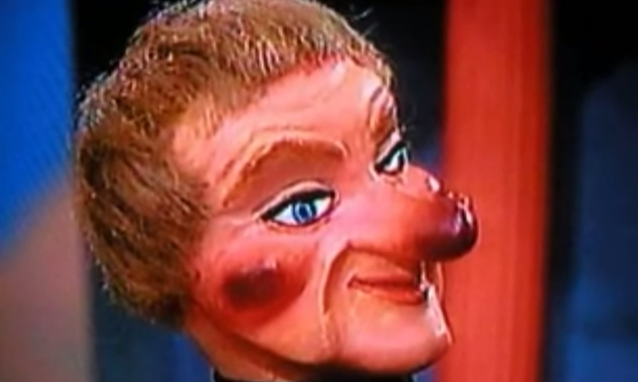
A lot of things scared me as a child, but Lady Elaine Fairchilde on Mister Rogers? Neighborhood was not among them. It appears I may be in the minority, however.
A recent internet search of her name primarily yielded comments about her ?frighteningly engorged nose,? and ponderings about whether she was a ?devil in a red cape.? In short? Everyone but me finds her rather creepy and disconcerting, and her visage way too scary to feature on a children?s television program today.
While the latter is probably true, I never thought of her as in any way creepy or scary; in fact, she was one of my first feminist icons.
There were a lot of things I admired about Lady Elaine, but the thing I got the biggest kick out of as a wee feminist was her unwavering confidence and ability to challenge authority. While the rest of the residents of the Neighborhood of Make-Believe were obedient of King Friday, Lady Elaine had no problem standing up to him, or just casually calling him ?Friday.?
Even as a child I appreciated Lady Elaine?s independence; she wasn?t constantly trying to find a husband, as she was too busy having her own host of adventures ? like traveling to space and discovering Planet Purple. Not only that, but she got to live in the Museum Go-Round ? which frankly, still sounds appealing to me today ? and had the Boomerang-Toomerang-Zoomerang at her disposal, which enabled her to turn the neighborhood upside-down.
(This whole episode below is dedicated to ?mad feelings? ? Lady Elaine Fairchilde used her boomerang to turn Grandpere?s tower on its head. If you?d like to see her in action, skip to minute 13:10.)
I also loved Lady Elaine?s signature style: She looked great in red, knew how to rock a cardigan, and didn?t let a bit of rosacea (heavy drinking?) ? and what is more-than-likely a DIY haircut ? stand in her way. Better yet, she played the accordion, which I related to not only because my hometown of Cleveland is America?s Polka Capital, but also because my father played the instrument to calm me down when I had colic as a baby.
Although I was a big fan of all of Mister Rogers? operas, Windstorm in Bubbleland held a special place in my heart because Lady Elaine ? in the role of Hildegarde Hummingbird ? was the hero. When she tried to warn the residents of Bubbleland of an imminent windstorm, no one believed her, so she was sent away. Of course, she was right about the change in weather, and came back to save the very people who banished her.
As she?s flapping her wings to stop the windstorm (stay with me ? they make a point of saying that hummingbirds flap their wings 60 times per second), she sings a line that I would often repeat in my head when I was trying to be brave: ?I?m strong as the wind, strong as the wind, Hildegarde Hummingbird, strong as the wind!? If that tiny bird could save the town, surely I, a diminutive girl from Ohio with undiagnosed anxiety, could make friends at a new school.
Tim Lybarger, creator and proprietor of The Neighborhood Archive ? home of all things Mister Rogers ? noted that Lady Elaine stands in stark contrast to the other soft-spoken and elegant female characters in the Neighborhood of Make-Believe. ?Her self-confidence and independence was matched by no one other than King Friday himself ? a source of frequent conflict between the two,? he explains.
In his book, Peaceful Neighbor: Discovering the Countercultural Mister Rogers, Michael G. Long describes how Fred Rogers used Lady Elaine to show his television neighbors that girls can do everything boys can, and are entirely capable of acting outside of conventional gender roles and of defying what society expects of them.

Lady Elaine?s questionably mischievous visage. Courtesy of YouTube / Autumn Raven
?Lady Elaine,? Long wrote, ?showed [that girls] could be noisy and mischievous, angry and competitive, athletic and confident, entrepreneurial and inventive, single and self-assured.? Basically, everything I wanted to be as a child, and continue to aspire to today.
Rogers also had Lady Elaine demonstrate the breadth of career options open to women ? sometimes simultaneously. In addition to being the owner and curator of the Museum Go-Round, she also opened a pie shop and syrup business, founded and managed her own television station (two years before Barbara Walters made her debut as the first female anchor of a major evening news program), and started the realistically-named Sometimes Happy Dance Studio.
In 1972, Lady Elaine traveled to Jupiter and discovered Purple Planet en route ? more than a decade before Sally Ride?s historic trip to space. Again, each of these accomplishments were achieved without the help of men, nor were they in some way presented as heroic tasks associated with motherhood. In fact, Lady Elaine was portrayed as anything but nurturing ? an early contribution to the ongoing conversation of the inevitability of motherhood for all women.

Mr. Rogers working the magic of Lady Elaine. YouTube/ Autumn Raven
Not only did Lady Elaine defy existing gender norms, she was also all about body positivity and confidence, before it was really a thing. In fact, some of Lady Elaine?s lessons of self-acceptance sound like they come straight from RuPaul?s playbook, including when she tells Lady Aberlin, ?You can?t love anyone else if you don?t love yourself.?
This self-love also stemmed from the fact that Lady Elaine knew ? and shows the television audience ? the importance of inner beauty and self-acceptance. She ?made it clear to children, both boys and girls, that our uniqueness is what makes us special and is something to be embraced with open arms,? Lybarger explained.
So next time you?re doubting yourself, gather up your cardigan and channel your inner Lady Elaine, okay, toots?
***
Lead image: YouTube/Nina Talmadge


